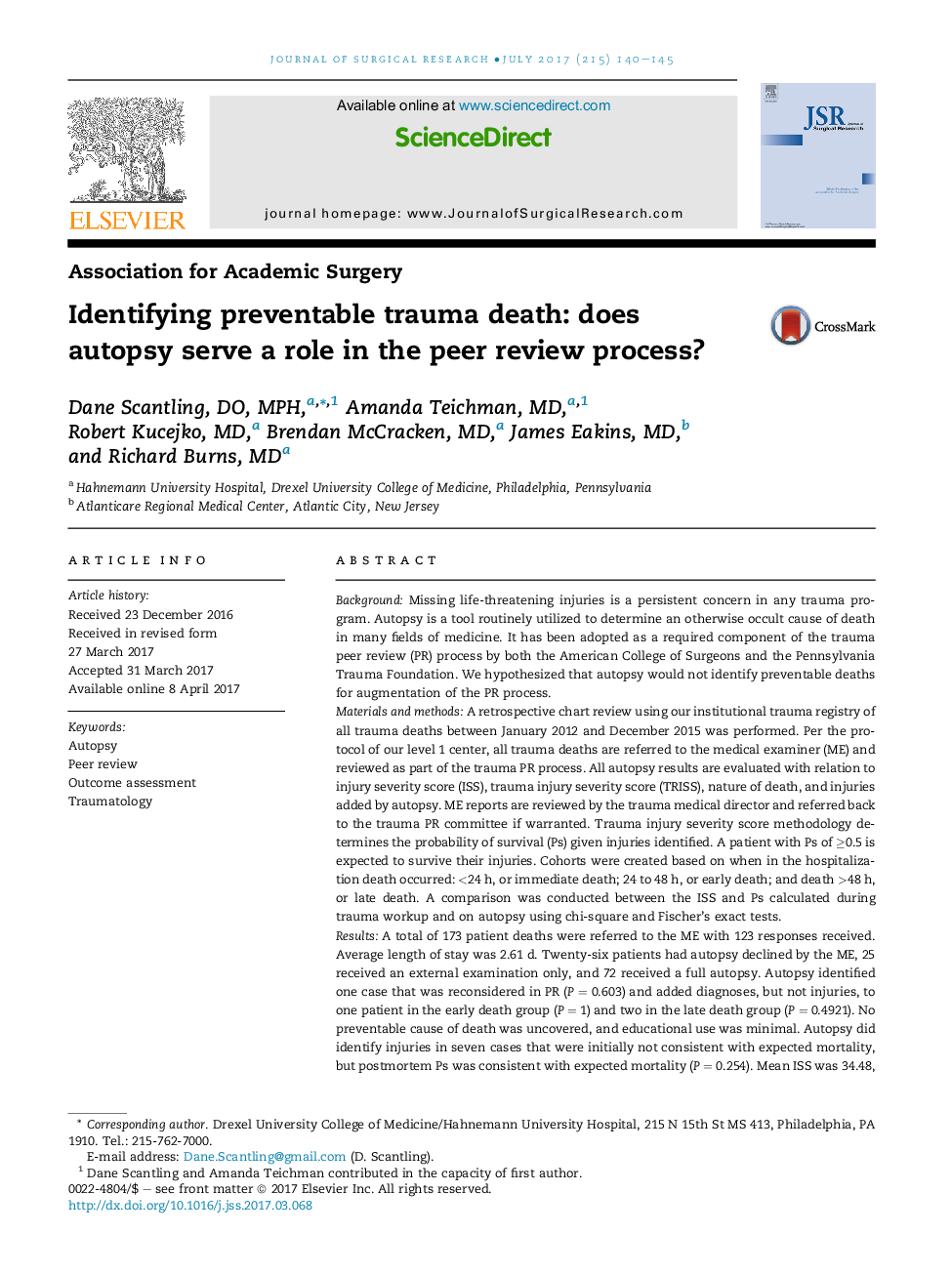| کد مقاله | کد نشریه | سال انتشار | مقاله انگلیسی | نسخه تمام متن |
|---|---|---|---|---|
| 5733746 | 1612517 | 2017 | 6 صفحه PDF | دانلود رایگان |
BackgroundMissing life-threatening injuries is a persistent concern in any trauma program. Autopsy is a tool routinely utilized to determine an otherwise occult cause of death in many fields of medicine. It has been adopted as a required component of the trauma peer review (PR) process by both the American College of Surgeons and the Pennsylvania Trauma Foundation. We hypothesized that autopsy would not identify preventable deaths for augmentation of the PR process.Materials and methodsA retrospective chart review using our institutional trauma registry of all trauma deaths between January 2012 and December 2015 was performed. Per the protocol of our level 1 center, all trauma deaths are referred to the medical examiner (ME) and reviewed as part of the trauma PR process. All autopsy results are evaluated with relation to injury severity score (ISS), trauma injury severity score (TRISS), nature of death, and injuries added by autopsy. ME reports are reviewed by the trauma medical director and referred back to the trauma PR committee if warranted. Trauma injury severity score methodology determines the probability of survival (Ps) given injuries identified. A patient with Ps of â¥0.5 is expected to survive their injuries. Cohorts were created based on when in the hospitalization death occurred: <24 h, or immediate death; 24 to 48 h, or early death; and death >48 h, or late death. A comparison was conducted between the ISS and Ps calculated during trauma workup and on autopsy using chi-square and Fischer's exact tests.ResultsA total of 173 patient deaths were referred to the ME with 123 responses received. Average length of stay was 2.61 d. Twenty-six patients had autopsy declined by the ME, 25 received an external examination only, and 72 received a full autopsy. Autopsy identified one case that was reconsidered in PR (P = 0.603) and added diagnoses, but not injuries, to one patient in the early death group (P = 1) and two in the late death group (P = 0.4921). No preventable cause of death was uncovered, and educational use was minimal. Autopsy did identify injuries in seven cases that were initially not consistent with expected mortality, but postmortem Ps was consistent with expected mortality (P = 0.254). Mean ISS was 34.48, and mean Ps was 0.275 among all patients. The most commonly identified injuries added by autopsy were rib injuries, lung injuries, and intracranial hemorrhage.ConclusionsAutopsy does not identify causes of preventable in an otherwise highly functioning trauma program and may be a poor use of institutional resources. In fact, it adds few diagnoses when death occurs after a full trauma assessment has had time to take place. Autopsy may be of use to identify protocol failure in maturing trauma programs, to give answers to grieving families and in select situations where death was unanticipated even after a full evaluation took place.
Journal: Journal of Surgical Research - Volume 215, July 2017, Pages 140-145
